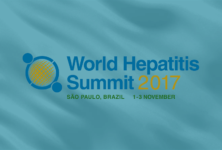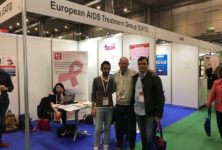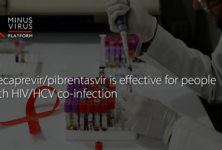Gay men and transgender people in England now have limited access to the HPV vaccine. Early results from an ongoing pilot study are extremely encouraging.
After years of community campaigning for the NHS to provide equity of care to gay men, the first data show that the vaccine is easy to deliver with a high level of interest in uptake. Limited data on the pilot programme were presented in a small informal briefing by Public Health England (PHE) who manage the programme. [1]
Background
Although there are over 100 types of HPV viruses (40 of which infect the genital tract) a few key strains are linked to the majority of health complications. The vaccine being used has extremely high efficacy against strains 6, 11, 16 and 18. HPV strains 6 and 11 cause more than 90% of genital warts. HPV 16 and 18 are linked to more than 70% of cancers in the in the vagina, vulva and cervix and 90% of HPV-related cancers in men (overall, covering anus (80-85%), penis (50%) and mouth and throat (36%) – not all these cancers are related to HPV.
The UK public health approach was to only vaccinate girls aged 12-13 in a school vaccination programme launched in 2012 (with a later “catch-up programme” extending for girls aged 13-17). If the uptake is high – and it has been – heterosexual adolescents become protected from the concept of herd immunity.
But even at the time, this decision was criticised for being particularly flawed. It provided no protection for gay men who are at significantly higher risk for many HPV-related cancers, especially if they are HIV positive.
After years of campaigning for equity of access, in November 2015, the Joint Committee on Vaccination and Immunisation (JCVI) – an independent UK committee of experts – recommended the vaccine for gay men and other men who have sex with men, up to and including the age of 45 (with no lower age limit). This was based on estimates of cost effectiveness if delivery costs were low. The recommendation noted that there are likely to be considerable benefits outside these boundaries in specific individuals. This includes gay men at higher ages, sex workers, and HIV positive women and men. [2]
A review of UK public health databases suggested that 110,000 gay men would be eligible based on the upper age limit of 45 years. The network of sexual health clinics strongly support expanding access to gay men – by agreeing to nominal reimbursement of £10 per vaccine shot. Both BHIVA and BASHH strongly support the pilot programme. [4, 5]
Summary update on pilot programme
The high level of efficacy – highly protective against four key strains – is already well-established. [3] The PHE programme is to look at operation questions above demand and access.
- The programme includes 43 sexual health clinics across England. [6] Clinics were chosen to provide best geographical coverage. All clinics that were asked to join accepted. These clinics are in 15 towns and cities (Brighton, Bournemouth, Weymouth, London, Milton Keynes, Great Yarmouth, Norwich, Bristol, Salisbury, Swindon, Chippenham, Manchester, Birmingham, Solihull and Newcastle).
- Enrolment started from June 2016 and by November 2016 all clinics were providing vaccinations. This took slightly longer than expected.
- Approximately 15,000 injections have been ordered (no data on number of people vaccinated).
- More than 3,700 participant questionnaires (on acceptability and service) have been returned to PHE.
Aims of the pilot programme
The aims of the HPV-MSM immunisation pilot are to evaluate two main areas. [7]
- The cost-effectiveness of providing the vaccine through GUM and HIV clinics. Evaluate vaccine uptake, the impact on clinic attendance, and to identify and find any unforeseen issues that may arise during the pilot.
- The response to the offer of a full course of the HPV vaccine “opportunistically” to all MSM up to and including the age of 45 years attending participating GUM and HIV clinics. This means asking people at a routine clinic visit – i.e. without publicity or a public information campaign. A leaflet on the programme was produced for use in participant clinics. [8]
The programme is designed for people to be offered vaccinations at routine clinic appointments – so that service costs are kept to a minimum. However, men who register at a participating clinic primarily for the vaccine are still able to receive it – but these cases need to be noted so that cost effectiveness can be calculated more accurately. So far, there are minimal reports of people accessing the vaccine this way.
Other questions
The meeting allowed the chance to ask questions on the programme. Together with discussion this clarified the following points.
- The programme for gay men is considerably smaller than the programme for girls that currently vaccinates 350,000 young women each year.
- In practice, clinics seem to find it easy to integrate the vaccine into routine clinic appointments. Uptake is high. The HPV vaccine can be given at the same time as other vaccinations, for example, hepatitis B.
- Although planned as a programme for men who have sex with men, transgender people are able to join the programme. The team were uncertain about how this data would be collected, based on the current enrolment forms.
- Although the pilot is only available in a limited number of clinics, there is not likely to be a later catch up programme for people who are currently 44 or 45 but who are not attending participating clinics.
- Although registering at a clinic just to access the vaccine is not recommended, people who are doing this are not being refused the vaccine; this use is just coded for later analysis.
- There are no plans to expand the current list of 43 participating clinics during any part of the pilot programme.
- The pilot MSM programme is running separately to the upcoming JCVI report on vaccinating adolescent boys.
- Programmes in Wales, Scotland and Northern Ireland are separate, and currently only thought to be at a planning stage.
- PHE cannot directly publicise the pilot programme but community organisations can do this. The NHS patient leaflet has been printed and is widely available at participating clinics.
- A likely timeline for full access was suggested as 2018/2019 (see Table 1).
- The cost of the programme has not been made public.
Data on vaccine effectiveness and response
Although this programme is impressive, it was also clear that funding has not been provided for clinical research.
By not linking the programme to a clinical research group, missed opportunities include losing data on:
- Current UK prevalence and distribution of HPV strains and prevalence in different populations.
- Vaccine responses in people who have already been infected.
- The impact of age on responses to the vaccine.
- The impact of HIV (with or without ART) on responses to the vaccine.
While none of these questions should prevent access, not at least storing baseline samples even in a subset of participants seems a missed opportunity.
Of note, the vaccine is still likely to have a protective effect even if someone has already been exposed and/or remains infected with these viral strains. The vaccine boosts natural immune responses by significantly higher levels. This is especially important for HIV positive people whose risks of HPV-related cancers are much higher than the general population.
Table 1: Selected timeline for access to HPV vaccine in England
| 2006 | Gardisil-4 approved in the US – against the four strains 6, 11, 16 and 18 (quadrivalent). |
| 2008 | JCVI recommend UK programme to vaccinate girls. |
| 2012 | UK programme to vaccinate girls aged 12-13, later expanded to ages 13-17. |
| 2015 | JCVI recommend vaccination for gay men and other men who have sex with men, aged 45 or younger. |
| 2016 | 43 clinics enrolled in programme (from May to November). |
| 2017 | First data analysis in March with preliminary report expected in May. This will likely only include information about the first one or two infections. The full course of three injections is planned to be given over 12 months (but up to 24 months is allowed). Extended roll out continues in same 43 clinics. |
| 2017 | JCVI to evaluate programme for vaccination for all boys (similar to the programme for girls). |
| 2018/19 | Full roll out expected, based on commissioning provisions. |
Comment
This programme is essential for redressing the inequity of protection against HPV for gay men and transgender people.
Efficacy data from the Australian programme of vaccinating girls in schools led to a 77% reduction in HPV types responsible for almost 75% of cervical cancers, almost 50% reduction in the incidence of high-grade cervical abnormalities in girls under 18 years old and a 90% reduction in genital warts in heterosexual men and women under 21 years of age. [9]
Similar levels of protection should be available to all citizens, irrespective of gender or sexuality.
A small study (n=50) presented at the BHIVA conference last year reported that almost half of gay men aged 18 to 25 had high risk HPV genotypes in anal swabs and HPV DNA was detected in 68% of participants. [10]
HPV is spread by skin to skin contact. It is likely both under-diagnosed and undertreated given HPV testing is never routinely available.
By Simon Collins
References
- PHE. Briefing on perception and experience of the initial months of the pilot HPV vaccination programme in gay men. 17 January 2017. Supportive documents online.
https://www.gov.uk/government/publications/hpv-vaccination-pilot-for-men-who-have-sex-with-men-msm - JCVI statement on HPV vaccination of men who have sex with men. (November 2015).
https://www.gov.uk/government/uploads/system/uploads/attachment_data/file/477954/JCVI_HPV.pdf (PDF) - MSD. Gardisil Product information. (US label).
http://www.fda.gov/downloads/BiologicsBloodVaccines/Vaccines/ApprovedProducts/UCM111263.pdf (PDF) - BHIVA. BHIVA responds to JCVI recommendation on HPV vaccination for MSM. (12 November 2014)
http://www.bhiva.org/BHIVA-responds-to-JCVI-recommendation-on-HPV.aspx - BASHH. British Association for Sexual Health and HIV Statement on HPV vaccination and MSM.
https://www.bashh.org/documents/BASHH%20Statement%20on%20HPV%20vaccination%20and%20MSM%202015.pdf (PDF) - PHE. Confirmed GUM and HIV clinics participating in the HPV vaccination for MSM pilot in England. (November 2015)
https://www.gov.uk/government/publications/hpv-vaccination-pilot-for-men-who-have-sex-with-men-msm/confirmed-gum-and-hiv-clinics-participating-in-the-hpv-vaccination-for-msm-pilot-in-england - PHE. Clinical and operational guidance for the HPV for MSM vaccination pilot. (August 2016).
- NHS England. HPV vaccination pilot for MSM: information leaflet. (2016)
https://www.gov.uk/government/uploads/system/uploads/attachment_data/file/526664/PHE_HPV_for_MSM_May16.pdf (PDF) - HPVvaccine.org.au. Has the [Australian vaccine] program been successful?http://www.hpvvaccine.org.au/the-hpv-vaccine/has-the-program-been-successful.aspx
- Hardy G. High prevalence of multiple high-risk HPV infections in young HIV positive gay men, HIV Treatment Bulletin, 01 June 2016.
http://i-base.info/htb/30045


 ПОИСК ПО САЙТУ
ПОИСК ПО САЙТУ  поиск по ресурсному центру
поиск по ресурсному центру 



